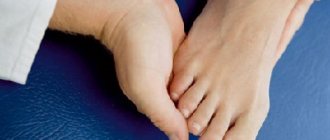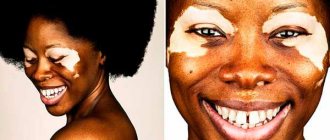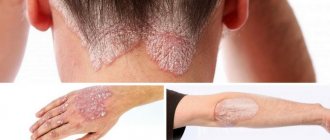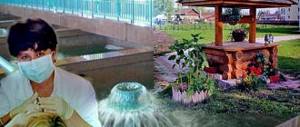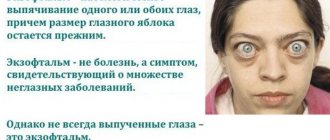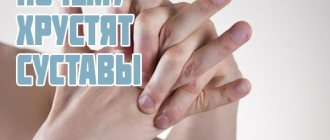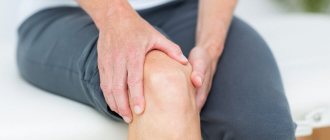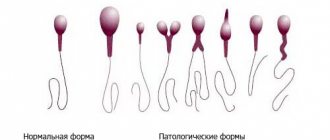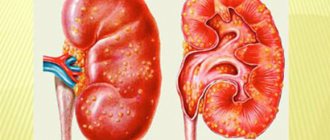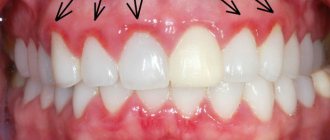Hello dear readers. Corns, or dry calluses, are compacted formations consisting of dead skin layers. With their help, the body tries to protect itself from overloads experienced by a certain part of the foot, as well as from rubbing or squeezing. Not only do such lumps look extremely unsightly, but they can also cause discomfort, pain and burning. In their place, sometimes quite deep cracks appear. Such open wounds can easily become infected, both fungal and bacterial. The article contains information on how to eliminate corns on the feet - quick treatment with folk remedies and pharmaceutical drugs, as well as the possibility of their mechanical removal.
Corns on the feet with a core - treatment
Corns with a core usually appear in the area under the fingers or on their pads. They arise due to mechanical action or due to viral activity. In the latter case, the fight against the corn itself should be carried out along with antiviral therapy.
At the initial stages of its formation, it is easy to cope with the problem on your own. For this purpose, you can use any of the methods proposed below, which will soften the stratum corneum and remove it along with the rod. But you won’t be able to get the desired result on the first try. It will be necessary to repeat the selected procedure many times.
If the rod managed to penetrate deep enough, then there is only one way out - surgical removal. Such manipulations must be carried out in a hospital under the condition of complete sterility, otherwise there is a high risk of secondary infection with all the ensuing troubles. The root must be completely removed.
All superficial methods of influence, including folk remedies and ointment compositions, will be ineffective in advanced cases. The calluses will continue to form again until the stem is removed.
How to remove corns on feet
Removing dry calluses may involve several stages. First of all, the traumatic factor should be identified and neutralized. It is necessary to reconsider the approach to choosing shoes. First you need to pay attention to the everyday couple. If it is narrowed, too small, its insoles are worn out or deformed, and the heels are high, then you need to discard it. We need to switch to shoes that are roomier and have low speed.
If the problem is related to orthopedic anomalies, then you need to seek advice from a specialist. And hyperhidrosis in most cases is eliminated with the help of traditional medicine recipes.
Having dealt with the root cause, you can begin to directly get rid of the corns. Horny layers must be removed. To do this, they need to be softened.
All kinds of folk and pharmacological remedies, as well as pedicure socks, will help with this. It should be borne in mind that many of these products contain corrosive substances, so they must be used with caution, avoiding contact of the aggressive composition with living skin.
Sometimes it is also necessary to deal with swelling, inflammation, pain and other symptoms. In this case, cold compresses help, as well as analgesic and anti-inflammatory medications.
For whatever reason, corns appear on the feet, quick treatment is possible only at the very beginning of their formation. If you miss this moment, the healing process may be delayed. In some cases, it is necessary to resort to mechanical removal of dry calluses.
This can be done using different procedures:
— hardware pedicure;
— laser therapy;
— cryodestructive technique:
- especially advanced cases require surgical measures.
Treatment
Corns on the feet are not that difficult to cure. This can be done in a doctor's office, a beauty salon, or at home.
Beauty salons use two ways to remove rough skin : it is removed during a hardware pedicure with special grinding attachments or cut off with a small knife.
At home, you can use steam baths, compresses, salicylic acid cream, and anti-callus patches. All these products perfectly soften rough skin, after which it can be removed with a pumice stone.
Doctors offer very effective ways to combat dry calluses: drilling, cryotherapy (liquid nitrogen treatment) and laser therapy.
All of these operations are easy, sometimes performed under local anesthesia, but usually do not cause pain. Thanks to these procedures, you can get rid of rough skin forever.
Important! These methods are good only when dry callus appears as a result of mechanical stress on the skin of the feet.
If the cause of the appearance of dry calluses is diseases of the internal organs, flat feet or foot deformities, then removing the calluses will not bring the desired effect. After some time, painful formations will appear again. They will disappear only after the underlying disease is cured.
Watch the video: removing corns at home
Pharmaceutical products for corns on the feet and ointments
To eliminate dry calluses, there are a considerable number of medications that can be purchased at the pharmacy. They are sold in the form of ointments and plasters. These products are affordable, compact, easy to use, and effective.
But it should only be used on areas with dead epithelium. The most convenient way to do this is to use an anti-callus plaster, cutting off a piece of the desired size and shape.
And for local application of ointment, use a regular adhesive plaster. To do this, a hole is cut in it, equal in size to the diameter of the corn.
It is glued to the leg so that it covers adjacent areas of the skin, leaving only the seal itself exposed.
The corns are covered with an ointment, and another piece of adhesive plaster is placed on top. It is advisable to wear a sock on top. After a few hours, the sticker is removed and the area is treated with pumice. It is better to do this after the next bath.
We should not forget that the effectiveness of any pharmaceutical product will be enhanced if the feet are also steamed and cleansed beforehand.
Ointment for corns on the feet
Among gels, creams and ointments, the latter have a pronounced therapeutic effect. The rest are closer to cosmetics.
Ointment preparations accelerate the exfoliation process, soften the skin more and promote its rapid renewal. Among the effective means, the following should be noted.
- Salicylic ointment.
- Keratolytic ointment.
- Bensalitin.
- Vishnevsky ointment.
- Balsam.
You can prepare a good ointment yourself. To do this, take a spoonful of vinegar essence and olive oil and beat one egg into this mixture. Here is another option for preparing a home remedy.
A fresh egg should be immersed in vinegar concentrate for several days. When the shell dissolves, turpentine and vegetable oil are added to the composition. The following ointments and pharmaceutical preparations are used until the corns completely disappear.
Why do corns form?
Before dealing with corns, it is important to understand where and why they come from. It is worth noting that women face this problem more often than men and children. The reason for this is uncomfortable, tight high-heeled shoes.
Psychosomatics claims that the appearance of hardened corns occurs due to “chewing” of outdated thoughts. Instead of getting rid of them, a person thinks a lot about the past and especially remembers the pain that was caused to him.
Also, provoking factors for the development of corns include:
- excess weight;
- flat feet and other possible curvatures of the shape of the foot;
- hormonal disorders;
- varicose veins associated with impaired blood supply.
Some scientists believe that there is a direct connection between diseases of the internal organs and the place where the corn appears. Thus, a lump opposite the thumb indicates gynecological problems.
Photo source: shutterstock.com
Corns on the feet, spreading from the heel to the inside of the sole, signal problems in the gastrointestinal tract. Coarsening of the skin on the edge of the heels indicates joint diseases, and on the outer edge of the foot - problems with the spine. A corn on the little finger indicates low immunity and chronic stress.
Prevention of corns
To prevent the formation of dry calluses, it is recommended to use the following prevention methods:
- Soften the sole using special pads or toe covers.
- Do regular cosmetic procedures for your feet: use pumice stone to remove dead tissue after taking a bath, rub your feet with a moisturizing and nourishing cream, do massages using essential oils.
- Wear comfortable and comfortable shoes with low heels or platforms.
Remember that prevented or timely eliminated corns will be the key to the health of your feet. By following preventive recommendations, you will protect yourself from discomfort and be able to fully enjoy life. And the video will tell you how to instantly remove corns and calluses on your feet:
What it is?
Corns are compactions of the surface layer of the skin, formed due to the accumulation of dead cells. In some sources, these formations are confused with calluses, but you need to know that they are not the same thing.
The fundamental difference is that calluses affect the deep layers of the skin, while corns affect only the upper layers. Treatment tactics directly depend on this characteristic.
Stages and symptoms of corns
Corns appear both asymptomatically and accompanied by certain symptoms.
At the first stage, during intense exposure, redness and swelling appear on the skin, and unpleasant sensations arise in the area of the small and big toes. As for the latter, its size increases, and its location in relation to the other fingers changes noticeably. In turn, periodic or chronic pain is observed, accompanied by swelling.
The next stage is characterized by the presence of gray or yellow areas that do not have clearly defined boundaries, with a smooth or rough surface. From time to time, cracks of varying depths can be seen on them.
Sensitivity in the area where the corns are located is noticeably reduced. The sensation of pain occurs only when walking, and intensifies only when an inflammatory process occurs.
Quick removal on feet
At the first stage of therapy, it is necessary to eliminate the factor that caused the formation of the corn. If the reason remains unclear, then you need to undergo a more detailed examination from medical specialists - perform an X-ray examination of the foot, consult an orthopedist.
After all the necessary studies have been completed, the attending physician will decide on the best method to remove the corn.
Next, we will consider in detail each of the possible options.
Drilling
The procedure should only be performed by a specialist (cosmetologist), in a room specially equipped for this purpose. If the hardened area has been bothering you for a long time, it is recommended to soften it using foot baths before removing it.
The process itself is mostly painless and is not accompanied by bleeding. During the procedure, a device with several nozzles is used - first larger, then smaller in diameter.
Drilling is indicated for removing corns without a rod.
Cryotherapy
The procedure is based on the use of liquid nitrogen. The substance is odorless and colorless. They only need to treat the affected area, since if healthy skin is involved, there is a risk of infection. Cryotherapy is painful, but is ideal for removing deep-rooted calluses.
After the procedure, the skin must be carefully cared for to avoid the development of possible complications.
Treatment with laser
This method of removing corns has several advantages over others. The list of its advantages includes:
- Harmlessness.
- Bloodlessness.
- Painless.
- Short duration of the procedure.
- Complete removal of formation in one session.
- No damage to healthy areas of the skin.
- No risk of infection or complications.
- Impossibility of relapses at the treatment site.
- Fast recovery period.
The only disadvantage of laser therapy is its high cost, which is why the method is not available to all segments of the population.
Despite its high efficiency and safety, the method should not be used in patients with diabetes mellitus, with malignant tumors and with damage to those areas of the skin that are to be treated.
In order for the recovery period to be successful, you should wear special insoles for some time after removing the corn.
Surgical removal
This intervention is performed only in the operating room and should be performed by an experienced surgeon.
A layer of dead skin is removed using a scalpel under local anesthesia. This method is rarely preferred, only in advanced stages.
How to remove a formation with a rod?
This type of corns is the most difficult to treat. This is due to the deep location of its root. In most cases, treatment in a medical facility is required. Preference is given to cryo- or laser therapy.
If the root has not grown deeply, then you can try to remove the formation at home. However, you should not delay seeking medical help in cases where the measures taken have no effect for a long time.
What can you do to get rid of it at home?
You can try to get rid of corns on your own. Currently, there are many effective local remedies - anti-callus patches, creams, ointments and gels with keratolytic action. All of them, to some extent, help soften the area with keratinized skin.
In cases where severe pain is a concern, the use of a cold compress is allowed. For medications, you can use non-steroidal anti-inflammatory drugs - Ibuprofen, Naproxen and others.
At home, it is strictly forbidden to try to cut off corns, especially if there are problems with blood circulation.
Creams and ointments for dry calluses
The modern pharmaceutical market offers many drugs for corns. Products that contain at least 10% salicylic acid are most effective against these formations. This is due to the fact that this substance promotes better rejection of dead cells.
Creams for dry calluses are cosmetic products. They contain mainly extracts of medicinal plants, so the drugs are hypoallergenic in nature.
The list of the most popular includes:
- Mozolin. Produced by an Altai company, the release form is a bottle. Has a lemon and herbal scent. The product is liquid in structure and is used as a basis for applications. Mozolin effectively softens seals and also has an antiseptic effect. Due to the presence of alkali in the composition, the drug can cause trauma to the mucous membrane and epidermis if used incorrectly.
- Aqua peeling. The product is quite concentrated, so it is used sparingly. The high efficiency is due to the active substance – urea, which contains about 40%.
- SVR Kserial 50 Extreme foot cream. A French-made cosmetic and hygiene product that has passed strict dermatological control. Does not contain parabens, fragrances or dyes. That is why it is allowed to be used in children from the age of three.
- Nemozol. The product is domestically produced, has a good composition and an affordable price. Contains exclusively natural, herbal products, as well as urea and salicylic acid.
Ointments, unlike creams, are more aggressive in composition, which explains their pronounced effect.
The most famous among them are:
- Super Antimozolin. According to consumer reviews, the product effectively copes with all types of dry and core calluses. Contains salicylic and lactic acid, urea.
- 5D five days for legs. This anti-callus ointment-paste is characterized by a pronounced keratolytic, softening and wound-healing effect. The composition contains petrolatum, lanolin and salicylic acid. The product is highly effective only when used as a therapeutic application.
- Salicylic ointment. It is an inexpensive and effective remedy. Apply pointwise to the formation. Not for use in children, pregnant and lactating women.
Corn plaster
The effectiveness of the product is due to the drugs contained on its surface. Therapeutic plasters allow you to fight all types of calluses that are small in size.
The most famous:
- Salipod. The patch is impregnated with salicylic acid and sulfur compounds. Apply directly to the affected area of skin. Shows its activity within 2 days. If used incorrectly, may cause chemical burns.
- Leiko. A patch with a cotton base impregnated with salicylic acid.
- Compeed. The patch is universal and helps with absolutely any type of callous formation. It can be produced in various forms, differing in size and configuration.
The patches must be applied to previously cleaned and dry calluses. The duration of exposure should be at least 24 hours.
Can it be cured with folk remedies?
You can soften and remove corns yourself. However, this treatment option is only allowed for new, i.e. recently emerged formations.
Regular skin care will help soften hardened areas. At home, you can prepare medicinal baths, compresses and treat the skin with essential oils.
Let's consider each of these methods in more detail.
How to remove it using compresses?
To get rid of corns, you can prepare compresses from vegetables or fruits.
Onion is an effective remedy. The root vegetable is cut into 4 parts, poured with vinegar and left for 3 days in a dark place. Then they apply it to the formation, fixing it with a bandage.
Instead of onions, you can use fresh finely grated potatoes, baked garlic, lemon or tomato paste for a similar compress.
Compresses with prunes have good effectiveness, which are recommended to be kept for no longer than 30 minutes. To prepare the remedy, the pit is removed from the fruit, after which it is softened and boiled in milk.
The fastest way to get rid of corns is with compresses made from crushed propolis.
Compresses based on oils - sunflower, olive, corn - also help well. It is advisable that they be first pressed. Such natural products moisturize the skin, eliminate flaking and heal existing cracks.
Compresses can be prepared from herbs and plants. Highly effective in the fight against corns are celandine (crushed leaves of the plant are used), dandelion (you will need juice from flowers, stems and leaves) and aloe (only the fleshy part of the leaf is suitable).
It is recommended to leave the compress overnight. In the morning, the skin is washed and treated with talcum powder or baby powder. The procedure is carried out regularly over a month.
Baths
Foot baths are a mandatory foot care procedure. There are several useful recipes that can quickly give your skin a healthy look:
- 20 g of laundry soap are grated and dissolved in 2 liters of warm water. Add a spoonful of ammonia to the soap solution. The foot bath is taken for 40 minutes. At the end of the procedure, the skin is treated with cream.
- 1 tablespoon of salt is dissolved in 1 liter of cool water. After the salt bath, the calluses are cleaned with a pedicure brush and a nourishing cream is applied.
- Whey foot bath. It should be taken within 30 minutes. To consolidate the effect at the end of the procedure, it is recommended to apply castor or sunflower oil or glycerin to the damaged area.
- Dissolve 2 tablespoons of hydrogen peroxide in 1 liter of warm water. At the end of the procedure, remove the corns using pumice.
- Pour 100 g of potato peelings, 40 g of flaxseeds into 2 glasses of water and boil. Dissolve the resulting slurry in warm water. The procedure should take approximately 30 minutes.
Foot baths should be taken at least 2-3 times a week. The combination of several recipes will only enhance the effectiveness of the treatment.
Cosmetic oils
Aroma massage is another effective, quick and painless way to remove corns.
Recipes using vegetable oil are especially popular. To do this, it is warmed to room temperature, applied to the affected areas and massaged into the skin for 5-7 minutes. After the procedure, prepare a hot foot bath. You can add lemon oil to the vegetable oil. It smoothes and softens the skin well.
In addition to these popular remedies, oregano, marjoram, tea tree, lemongrass or sage oils are often used for aroma massage.
Onion compresses
Compresses for corns are widely used in folk medicine, as they quickly help eliminate rough skin and old calluses. One of the most effective is a compress made from fresh onions, which is applied before bed and kept overnight. Onions contain a lot of flavonoids and phytoacids. They not only have a softening effect, but also heal cracks and wounds well.
To make a compress, you need to rub a peeled medium onion on a fine grater, apply the paste to the areas where corns accumulate and wrap with cling film. Try not to do this too tightly to prevent poor circulation. Apply several layers of bandage to the cling film and put on socks made of natural wool. In the morning, thoroughly rinse off the compress and treat the calluses with a piece of pumice or a special brush.
You can use onions infused with vinegar. You will need to cut a large onion into 4 parts, put it in a jar and pour 100 ml of apple cider vinegar. Cover the container with a tight lid and place in a dark place. It will take 3 days to prepare this remedy for corns. After the specified time, you need to take out the onion, apply it to the calluses and wrap it in plastic. Insulate the top with natural fabric and put on socks. Overnight, rough skin will become soft. It is cleaned with pumice and sprinkled with talcum powder. It is recommended to do the procedure regularly for a month, and there will be no trace left of the yellowish formations.

